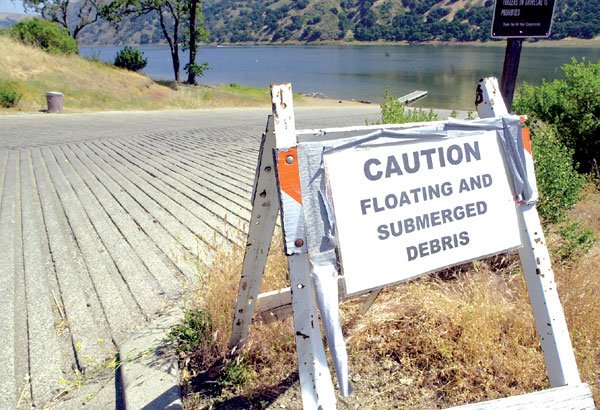GILROY
– County officials confirmed Tuesday that alcohol and
overcrowded conditions were not factors in the Coyote Reservoir jet
ski collision that took the life of a 28-year-old San Jose
woman.
GILROY – County officials confirmed Tuesday that alcohol and overcrowded conditions were not factors in the Coyote Reservoir jet ski collision that took the life of a 28-year-old San Jose woman.
However, speed could be a cause. Officials estimate the driver of the jet ski that rode into Rachael Truong and her boyfriend’s watercraft Sunday was going 30 to 35 mph. The accident happened in a 5 mph zone close to Sandy Beach.
Officials also confirmed that victim Truong was a passenger on her boyfriend’s watercraft when it was broadsided by another jet skier Sunday afternoon. The driver of the ill-fated vessel escaped with minor injuries.
“The vessel climbed on top of the victims’ watercraft, killing one of them as it went up over them broadside,” county parks spokesperson Tamara Clark-Shear said.
Truong was riding in front of the vessel’s driver, a passenger position not recommended by watercraft safety advocates.
“A lot of accidents happen that way,” said Amy Rigby, a boating accident analyst for the California Department of Boating and Waterways. “People often put children in front of them, but then that gives children access to the vessel’s controls and the adult driver loses control.”
Rigby said there are no laws prohibiting passengers to ride in front of watercraft drivers, but positioning the passenger behind the vessel operator is always preferred.
“It just makes it that much more difficult to operate a vessel. Imagine driving your car, you’re not going to put a passenger between you and the wheel,” Rigby said.
The coroner’s office said multiple traumatic injuries was the cause of Truong’s death. She did not drown.
It could be another five days, Clark-Shear said, before the cause of the accident can be determined by county parks and Sheriff’s investigators.
Officials would release no other details regarding the drivers of the jet skis, but it has been confirmed that the driver who hit the victims is an adult and that he was not under the influence of alcohol. Television news reports claiming the driver fled the scene at one point during the aftermath were false, Clark-Shear said.
“I don’t know where those reports came from, but things get pretty hectic after something like this happens,” Clark-Shear said. “The driver remained at the scene and cooperated when he was asked to.”
Officials are not naming the driver, but he was given a boating ticket and is still under investigation. No criminal charges have been filed against him.
Sunday’s accident is the first fatality in at least eight years at Coyote, Clark-Shear said. One other fatal accident occurred earlier this year at Lexington Reservoir in Los Gatos.
In the wake of Coyote Reservoir’s most recent watercraft accident, word of the tragedy is topic for discussion at the lake.
“Other boaters were talking about it with me,” said Gilroyan Matt Newton. “People are definitely aware this tragedy happened, and maybe that’s a good thing. Hopefully this will make people think about how vulnerable they are out there.”
Newton is new to personal watercrafting, although he has been around boats since he was 8 years old. On Monday, the day after the accident, he took his girlfriend and two daughters – and his newly purchased Seados – for an afternoon of jet skiing.
“I like to go out at the less -crowded times. The more space I have, the more comfortable I am,” Newton said.
On Sunday, 20 vessels were in the 635-acre lake. Capacity is 70 vessels of any type.
As for Newton, he has no plans to end his new hobby.
“I still feel safe out there. Rangers always seem to be checking up on people. You feel their presence.”
Also on Sunday, park rangers were performing boat and on-shore patrols, officials said.
“We’re not looking at any rule changes or increase in patrol, but we are trying to reinforce our education efforts as we do every boating season,” Clark-Shear said. “Our rangers are talking with people about safety as they come into the park, and we encourage them to take boater safety classes, too.”
In 1997, after California water accidents spiked to 391, so-called horseplay laws were put into effect. The laws prohibit riding too close to another vessel and “spraying down” other motorists – when one vessel operator suddenly turns their watercraft at a high speed, causing a spray of water to shoot outward.













